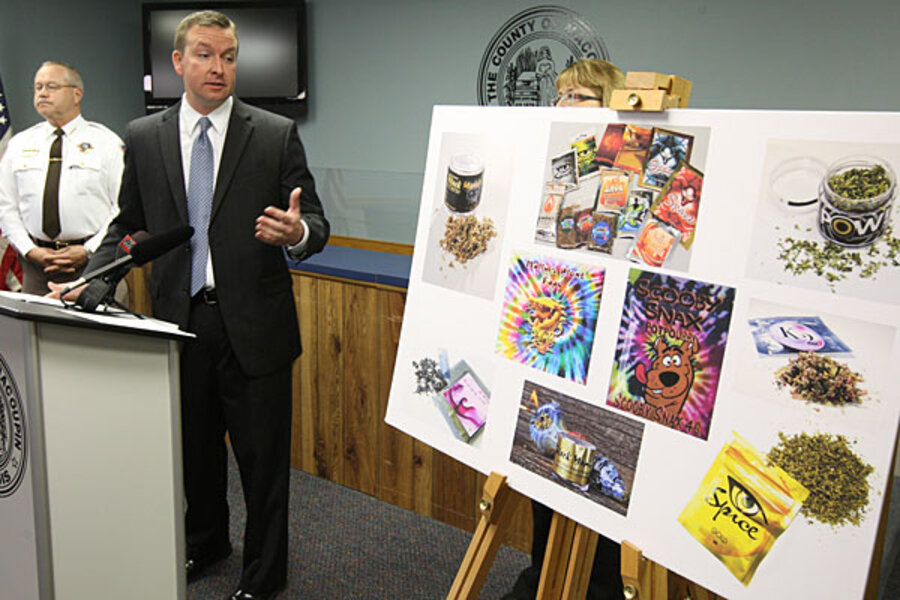Bath salts: police and hospitals befuddled by new drug craze
| Los Angeles
A new and dangerous class of synthetic drugs is emerging on the American landscape, bedeviling law enforcement and baffling parents and families.
Known euphemistically as “bath salts,” they are chemical concoctions that are sold over the Internet or on convenience-store shelves under names like "Purple Wave," "Zoom," or "Cloud Nine."
Researchers say the effects of bath salts are similar to those induced by cocaine or LSD, but emergency rooms – unfamiliar with the drug – really don’t know what they are dealing with, say experts. Recent incidents include a Pennsylvania man in possession of bath salts who attempted to rape a store clerk and four college students in Grand Rapids, Mich., who took bath salts and had to be rushed to the hospital.
Similarly, a New York Times report cites "a man in Indiana who climbed a roadside flagpole and jumped into traffic, a man in Pennsylvania who broke into a monastery and stabbed a priest, and a woman in West Virginia who scratched herself 'to pieces' over several days because she thought there was something under her skin."
In response to the problem, the US Drug Enforcement Administration on Oct. 22 banned three substances often used in bath salts, but the challenge is an ongoing one, says Rutherfoord Rose, director of Virginia Commonwealth University’s Virginia Poison Center in Richmond.
“These have been formulated by street chemists who try to stay one step ahead of law by tinkering with the molecular makeup of recently banned substances,” says Dr. Rose.
An entire subterranean world of experimenters has existed since the 1960s, chronicling the effects of all kinds of substances in books and diaries. Subsequent generations have tried to develop and market the drugs as new kinds of euphoric highs.
Also disguised as plant foods, cellphone cleaners, or herbal incense and carrying the warning, “not for human consumption” to avoid prosecution, bath salts can be ingested, inhaled, or injected. A 50-milligram packet usually sells for $25 to $50.
The number of phone calls to poison centers about exposure to bath salts rose from 304 in 2010 to 6,138 in 2011 and are at 228 so far this year, according to the American Association of Poison Control Centers.
“This parallels the widely documented spike in the abuse of legal prescription drugs,” says Christina Hantsch, head of toxicolcogy at the Loyola University Medical Center. “People on the street are always looking for new, different, and cheaper highs.”
VCU's Rose thinks the rise in bath-salt use has peaked, probably as a result of the DEA’s move. But for the moment at least, hospitals are still playing catch-up.
“The physical complaints/symptoms, combined with the psychological symptoms are getting attention mainly because there is no standard treatment plan at this time,” says Elizabeth Dowdell, associate professor at the Villanova University College of Nursing in Philadelphia. “These individuals can be very difficult to treat because of their delusions and physical strength. Many of the reports remind me of the old days when PCP was a major drug and the wild behaviors associated with ingestion."






